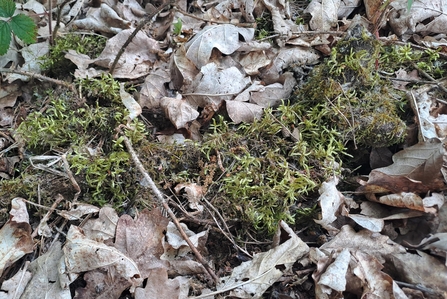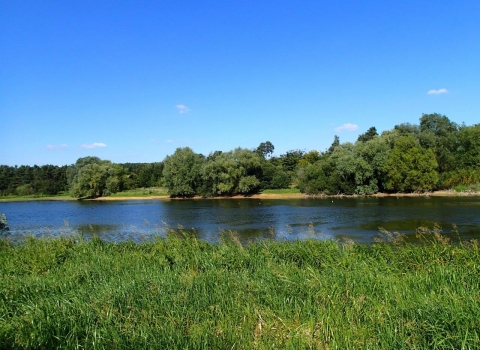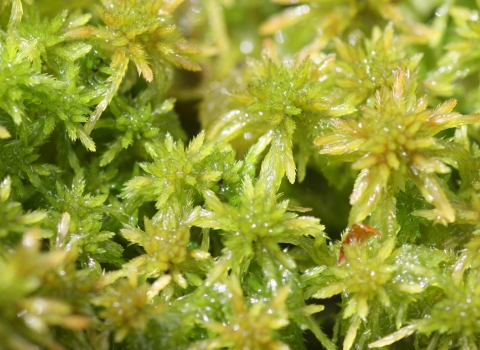Rolling stones may not do it, but Frances Higgs and Rachel Carter certainly can. These two bryologists identified four moss species new to the site list at Pitsford Water Nature Reserve during a survey day in May. And one of those species had not been recorded in Northamptonshire since 1899!
Reserves Officer Mischa Cross organises monthly survey days attended by entomologists, bryologists ornithologists, and other local experts. Photographers often come along to record new discoveries on the site as well as any other photogenic birds, bees and beetles they might find. Each year, the monthly surveys are in one dedicated area of the Reserve, to research the flora and fauna across the span of spring, summer and autumn. In 2023, the survey days are taking place at Christie’s Copse where substantial management work had been done over the previous year. The trees had been thinned out and new ponds created. So, it will be interesting to discover which species colonise the area.
On the very first day, Frances and Rachel did indeed discover four species new to the site. Hypnum jutlandicum, Polytrichyum juniperinum, Thuidium tamariscinum and Pleurozium schreberi. Now, this last is very interesting and we will get to that in a minute.
But before that, an important point to note. Rachel explained that bryophytes would not have turned up as a result of the recent work. They will have taken decades to establish. They are new to the site records as the surveys are being conducted at this location for the first time in many years – but that doesn’t lessen the significance. As Rachel stated, it is hugely encouraging that a bryophyte community has established in what is essentially a “man-made” habitat. It’s a credit to the thought and foresight that went into the planning of this special copse.








